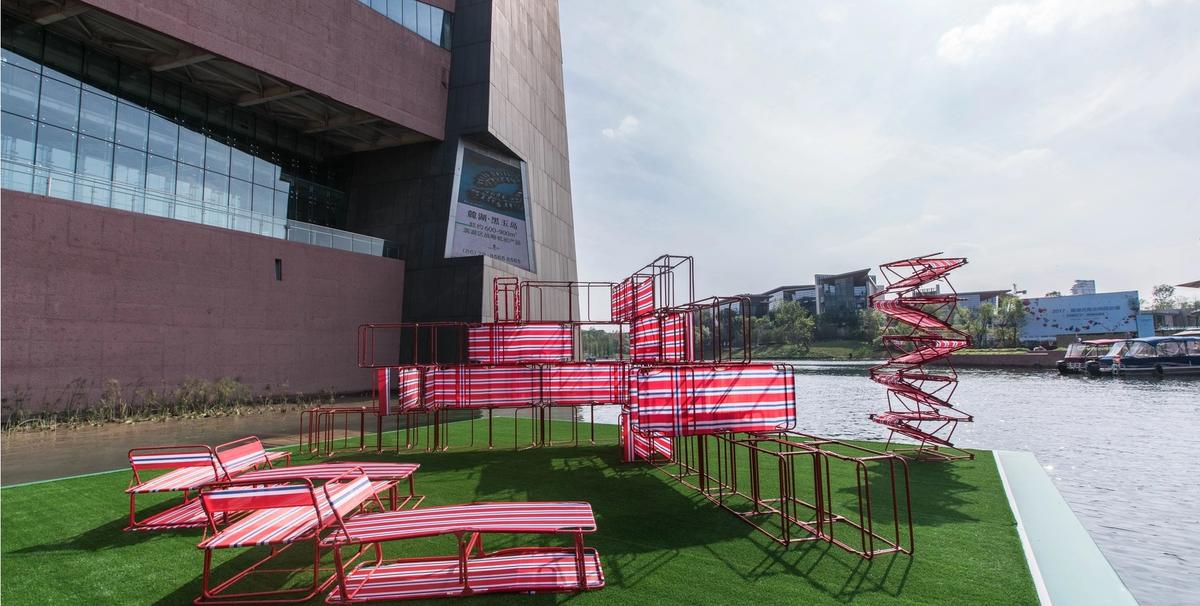The Luxelakes A4 Art Museum in the Chinese city of Chengdu opened its new location last weekend (April 15) with a 13-artist show Create Spaces (until July 16). The museum was established in 2008 and named after the building number of its original location, which closed in late 2015. It is the sole private art museum in the culturally vibrant capital of Sichuan Province.
The opening exhibition occupies 1,500 sq m of a 3,500 sq m building, which rises dramatically over the man-made lake that is the centrepiece of a 1.5 million-sq-m property development in the city’s Tianfu New Area. A library, children’s art centre and multipurpose hall will open next year, as will a new subway line to the area; a 750-seat theatre will follow in 2019. Along with four shows a year, A4 organises more than 100 educational events, plus research, residencies and exchanges, the museum’s artistic director Sunny Sun Li says. “Though we are not downtown, we do outreach and public art. It is not enough to just do a show, we have to make audiences understand it—through media, key opinion leaders, and reaching kids.” The museum’s former location attracted 200,000 visitors a year, and Sun expects that to increase at the new location.
The opening group show of mostly new commissions represents how A4 plans to “not just show art that is just painting, new media, or connected to Chengdu, but all three, with a mixture of Chinese and international contemporary art”, says the assistant curator Li Jie. Highlights of the eclectic exhibition include Secret of Streets—Chengdu (2017), by the Chongqing-based duo Noffice (Wei Haoyan and Zhu Ye), which replicates the familiar but fading-into-nostalgia trappings of a government office, and the Hong Kong artist Tim Li’s unfolding the possible X (2017), consisting of collapsible beds made from the canvas bags used by Chinese migrant workers, installed on a raft on the lake.
A4 supports research-based art projects in Chengdu through young artists and curators’ initiatives, as well as international artist exchanges and residencies. For the latter, it has worked in partnership with the Yokohama Museum of Art since 2008 and the Kyoto Art Center since last year, inviting Japanese artists to Chengdu and building ties countering China’s fraught relationship with Japan. Japanese museums also inform A4’s proactive and family-focused public outreach, Li says. “A lot of public education is very lazy or trendy”, Li says, but offering programming for children pulls parents into the museum in a city where contemporary art is new and unfamiliar. Local artists require cultivating as well, he says. Though numerous, “there are not many who are very experimental, but they have ideas and energy.”


